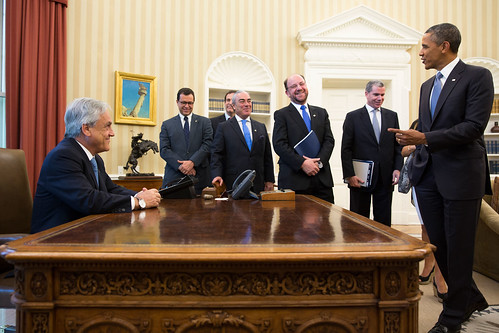In the furious search for Bezos-related content pegged to his
purchase of the Washington Post, a 2012
piece from CNN Money contains a notable nuggets on Amazon internal culture around the "six-pager" (emphasis mine):
More revealing is that the Amazon CEO's fondness for the written word
drives one of his primary, and peculiar, tools for managing his
company: Meetings of his "S-team" of senior executives begin with
participants quietly absorbing the written word. Specifically, before
any discussion begins, members of the team -- including Bezos -- consume
six-page printed memos in total silence for as long as 30 minutes.
(Yes, the e-ink purveyor prefers paper. Ironic, no?) They scribble notes
in the margins while the authors of the memos wait for Bezos and his
minions to finish reading.
Amazon (AMZN)
executives call these documents "narratives," and even Bezos realizes
that for the uninitiated -- and fans of the PowerPoint presentation --
the process is a bit odd. "For new employees, it's a strange initial
experience," he tells Fortune. "They're just not accustomed to
sitting silently in a room and doing study hall with a bunch of
executives." Bezos says the act of communal reading guarantees the
group's undivided attention. Writing a memo is an even more important
skill to master. "Full sentences are harder to write," he says. "They
have verbs. The paragraphs have topic sentences. There is no way to
write a six-page, narratively structured memo and not have clear
thinking."
When I mentioned the awesomeness of this idea on my Twitter feed, it sparked a remarkable level of interest, which is to say more than zero. A number of folks seem genuinely surprised by the concept. On the one hand, some suggested that mandatory reading periods are a waste of senior leadership's time. Others were transfixed by Bezos's radical new technology for improving corporate communication called
getting people to read documents that are sent to them. As you can see from that phrasing, the second group provides the answer to the first. Yes, at first blush it looks like bit of a time sink to have senior executives sit around a table reading memos. But if the most likely alternative is that staff spend hours writing carefully crafted memos only to have senior executives (a) largely ignore them, and then (b) spend an hour pontificating in a semi-informed or ill-informed manner on topics addressed by the memos, that's an
even bigger waste of company resources
. Obviously if there were some technological means of ensuring that everyone carefully considered all meeting-related documents before the meeting takes place, that might be superior, but I'm unaware of such a magical device. It also might
not be much of an improvement, since the reading session puts the memo in the front of everyone's mind. Reading the memo the night before means that you're trying to recall what you thought about it instead of hearing what others have to say.
 |
I'm an occasional defender of PowerPoint, but it should not be the default
form of business communication. |
It should be noted that the "six-pager" and subsequent reading session serve a useful forcing function both for a memo's author and its intended audience. For one, it ensures that upper management is actually doing their job, which is examining the advice of their underlings and making decisions, rather than
feeling so busy because they're waving their arms really really fast. For two, it ensures that authors must think their message through to the point where they can write about it using coherent English sentences (or perhaps even in paragraphs!) rather than PowerPoint-ready sentence fragments. The specifics of the six-pager format might not be perfect, but it does at least ensure that technology workers are taking enough time to think about issues in a cohesive fashion.
 Over this month, I plan to give away over $10,000 to the best charitable and political causes I can find.
Over this month, I plan to give away over $10,000 to the best charitable and political causes I can find.






















